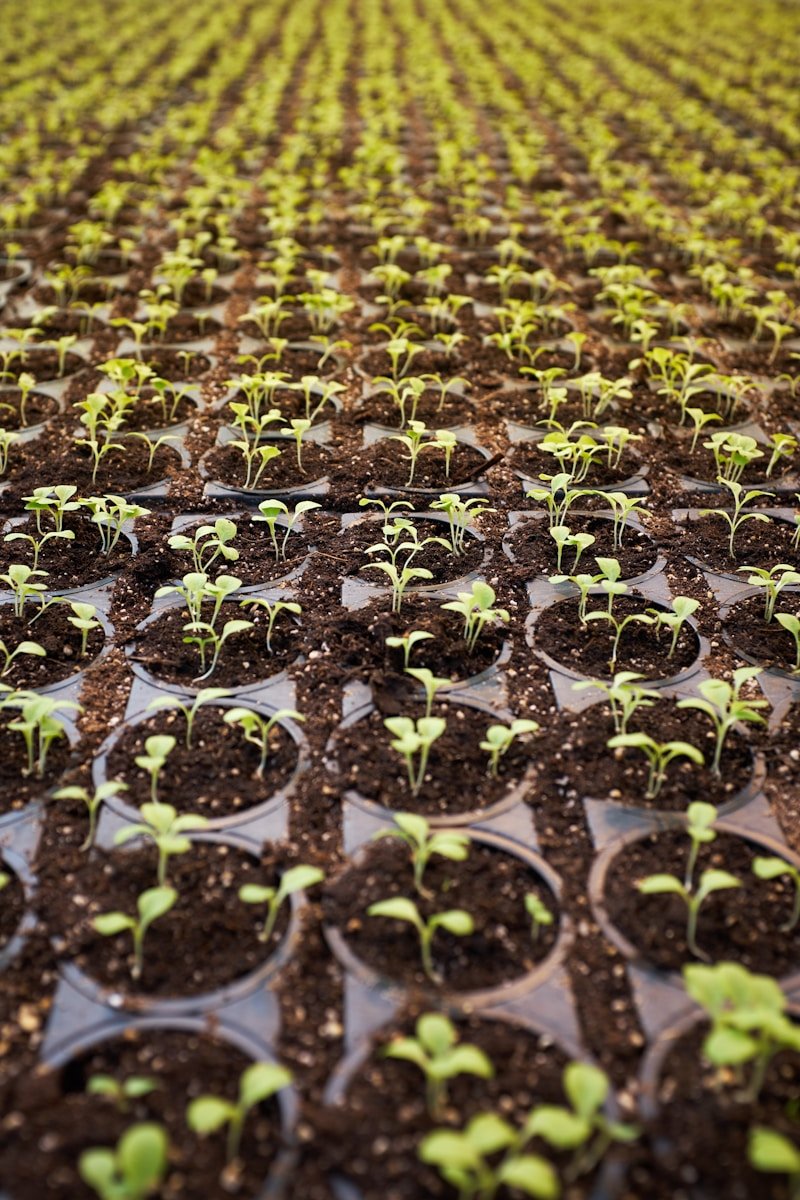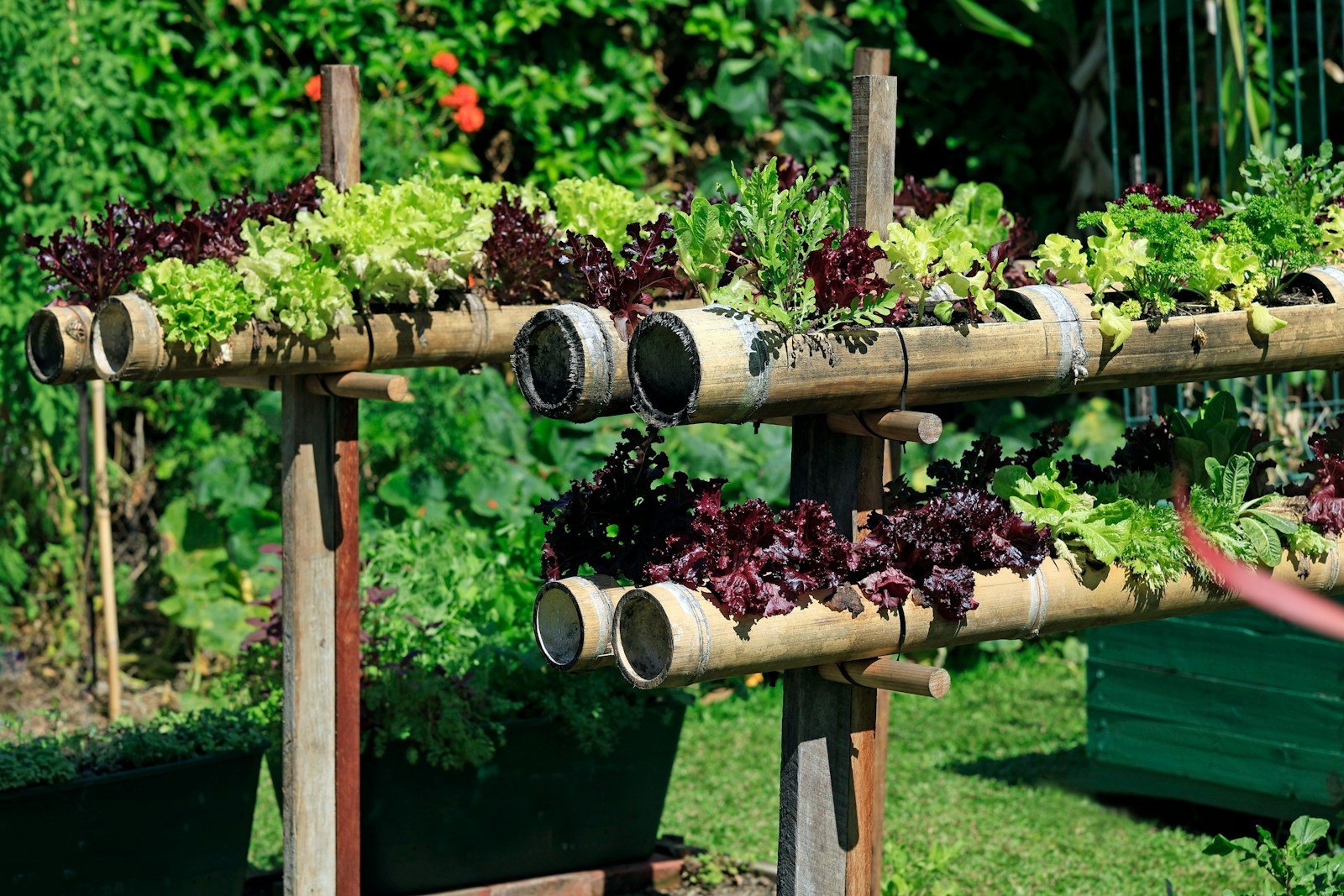Vertical Farming has become a buzzword in the world of sustainable agriculture. It offers a revolutionary way to grow your own fresh produce, even if you have limited space. By utilizing vertical farming, you can create a thriving garden in your home, apartment, or even a small balcony. This method not only maximizes space but also optimizes resource use, ensuring you get the most out of your efforts. In this comprehensive guide, we’ll walk you through the steps to start your own vertical farm at home, from choosing the right location to selecting the best crops and systems.
Table of Contents
Vertical Farming
Before we dive into the practical steps, it’s essential to understand what vertical farming is and why it’s such an innovative approach. Traditional farming relies on horizontal space, often requiring large plots of land. In contrast, vertical farming involves growing crops in stacked layers or vertically inclined surfaces. This method can be used both indoors and outdoors and is particularly beneficial for urban environments where space is at a premium.
Vertical farming utilizes various techniques, including hydroponics, aquaponics, and aeroponics. These soilless growing methods use nutrient-rich water solutions or mist to feed the plants, resulting in faster growth rates and higher yields. Additionally, vertical farming systems can be highly automated, allowing for precise control over environmental factors like light, temperature, and humidity.
Source: Urban Agriculture: A Growing Field
Step 1: Choose the Best Location
The first step in starting a vertical farm is to choose the right location. Look for a spot in your home that gets sufficient natural light. A sunny windowsill, a balcony, or a dedicated room with windows can work well. If natural light is limited, you can supplement it with LED grow lights. These lights mimic the natural spectrum of sunlight, providing your plants with the energy they need to grow.
When selecting a location, consider factors such as:
- Accessibility: Ensure the location is easily accessible for planting, watering, and harvesting.
- Ventilation: Good air circulation is crucial to prevent mold and mildew growth.
- Temperature: Most plants thrive in temperatures between 65-75°F (18-24°C).
Recommended Product: GE LED Grow Light

Step 2: Select the Right Hydroponic System

There are several types of hydroponic systems you can choose from, including Nutrient Film Technique (NFT), Deep Water Culture (DWC), and vertical towers. Each system has its own advantages, so it’s essential to select one that suits your space and needs.
Nutrient Film Technique (NFT)
NFT is a popular hydroponic system that involves a thin film of nutrient-rich water flowing over the roots of the plants. This method allows for efficient nutrient uptake and provides excellent oxygenation to the roots. NFT systems are often used for growing leafy greens and herbs.
Deep Water Culture (DWC)
In DWC systems, plant roots are submerged in a nutrient-rich solution, with an air pump providing oxygen to the water. This method is suitable for a wide range of crops, including leafy greens, herbs, and even some fruiting plants like tomatoes.
Vertical Towers
Vertical towers are perfect for maximizing space in small areas. These systems use stacked layers or columns where plants grow in small pots or net cups. Nutrient-rich water is pumped to the top and flows down, nourishing the plants along the way. Vertical towers are ideal for growing a variety of crops, from leafy greens to strawberries.
Recommended Product: AeroGarden Harvest Indoor Hydroponic Garden

Step 3: Choose the Right Crops
Selecting the right crops is crucial for a successful vertical farm. Start with easy-to-grow plants that are well-suited for vertical farming. Here are some popular choices:
Leafy Greens
Leafy greens like lettuce, spinach, and kale are excellent choices for vertical farming. They grow quickly and require minimal maintenance. These nutrient-dense greens are perfect for salads, smoothies, and a variety of dishes.
Herbs
Herbs like basil, mint, parsley, and cilantro thrive in vertical farming systems. Having fresh herbs on hand can elevate your culinary creations, and they also add a fragrant touch to your indoor garden.
Strawberries
Strawberries are a delightful addition to any vertical farm. They grow well in vertical towers and produce sweet, juicy fruits. With proper care, you can enjoy fresh strawberries throughout the growing season.
Tomatoes
Tomatoes are another great option for vertical farming. Choose compact or dwarf varieties that are suitable for container gardening. Tomatoes require more care and support, but the reward of home-grown, vine-ripened tomatoes is worth the effort.
Source: Vertical Farming Crops

Step 4: Set Up Your Vertical Garden
Once you’ve chosen your location, hydroponic system, and crops, it’s time to set up your vertical garden. Follow these steps for a successful setup:
Assemble the Hydroponic System
Follow the instructions for your chosen hydroponic system to assemble it properly. Make sure to use high-quality materials and ensure that the system is stable and secure. Double-check that all connections are tight and that there are no leaks in the system.
Prepare the Nutrient Solution
The nutrient solution is the lifeline of your plants. It provides all the essential nutrients needed for growth. Use a high-quality hydroponic nutrient solution, and mix it according to the manufacturer’s instructions. Monitor the pH and nutrient levels regularly to ensure they remain within the optimal range.
Planting
Place your plants in the system, ensuring that the roots are well-covered with the growing medium. Depending on the system, you may use materials like rockwool, coconut coir, or clay pellets. These mediums provide support and help retain moisture for the roots.
Lighting
If natural light is insufficient, set up LED grow lights to provide your plants with the necessary light. Position the lights to cover all areas of your vertical garden, and adjust the height as the plants grow. Most plants require about 12-16 hours of light per day for optimal growth.
Step 5: Maintain Your Vertical Farm
Proper maintenance is key to keeping your vertical farm healthy and productive. Here are some essential tips:
Monitor Water and Nutrient Levels
Regularly check the water and nutrient levels in your system. Refill the reservoir as needed, and ensure that the nutrient solution remains balanced. Use a pH meter and nutrient tester to keep track of the levels.
Pest and Disease Management
Keep an eye on your plants for any signs of pests or diseases. Common issues in vertical farming include aphids, spider mites, and fungal infections. Use organic pest control methods, such as neem oil or insecticidal soap, to address any problems promptly.
Pruning and Harvesting
Prune your plants regularly to remove dead or yellowing leaves and encourage healthy growth. Harvest your crops as they mature, and enjoy the fresh, home-grown produce. Pruning also helps improve air circulation and light penetration, reducing the risk of disease.
Recommended Product: General Hydroponics pH Control Kit

Step 6: Expand and Innovate
As you gain more experience with vertical farming, consider expanding your setup or experimenting with new crops and techniques. Here are some ideas:
Advanced Hydroponic Systems
Explore more advanced hydroponic systems, such as aeroponics or aquaponics. Aeroponics uses mist to deliver nutrients to the roots, while aquaponics combines hydroponics with fish farming, creating a symbiotic ecosystem.
Smart Farming Technology
Incorporate smart farming technology to automate and optimize your vertical farm. Use sensors and controllers to monitor and adjust environmental factors like light, temperature, and humidity. Some systems can even send alerts to your phone if any issues arise.
Educational Opportunities
Share your knowledge and experience with others by starting a blog, YouTube channel, or social media account dedicated to vertical farming. You can inspire and educate others to start their own vertical farms, contributing to a more sustainable future.
Source: Smart Farming Solutions
Conclusion
Starting a vertical farm at home is a fantastic way to grow your own fresh produce, even if you have limited space. By following these steps, you’ll be well on your way to creating a thriving garden in your home. Vertical farming offers a sustainable and efficient solution for urban gardening, allowing you to enjoy the benefits of home-grown food year-round. Happy farming!











